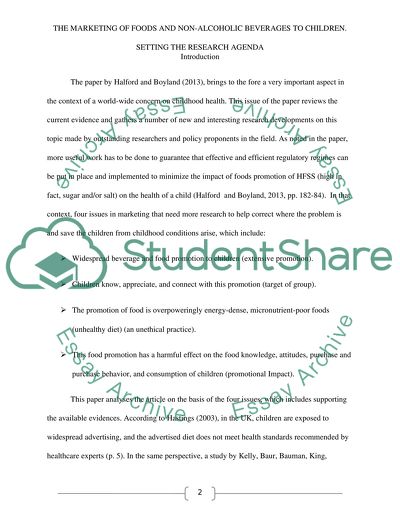Cite this document
(“The marketing of foods and non-alcoholic beverages to children Essay”, n.d.)
The marketing of foods and non-alcoholic beverages to children Essay. Retrieved from https://studentshare.org/marketing/1630552-the-marketing-of-foods-and-non-alcoholic-beverages-to-children-setting-the-research-agenda
The marketing of foods and non-alcoholic beverages to children Essay. Retrieved from https://studentshare.org/marketing/1630552-the-marketing-of-foods-and-non-alcoholic-beverages-to-children-setting-the-research-agenda
(The Marketing of Foods and Non-Alcoholic Beverages to Children Essay)
The Marketing of Foods and Non-Alcoholic Beverages to Children Essay. https://studentshare.org/marketing/1630552-the-marketing-of-foods-and-non-alcoholic-beverages-to-children-setting-the-research-agenda.
The Marketing of Foods and Non-Alcoholic Beverages to Children Essay. https://studentshare.org/marketing/1630552-the-marketing-of-foods-and-non-alcoholic-beverages-to-children-setting-the-research-agenda.
“The Marketing of Foods and Non-Alcoholic Beverages to Children Essay”, n.d. https://studentshare.org/marketing/1630552-the-marketing-of-foods-and-non-alcoholic-beverages-to-children-setting-the-research-agenda.


